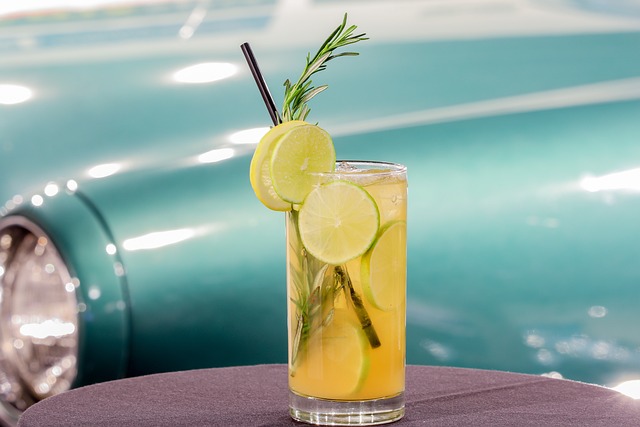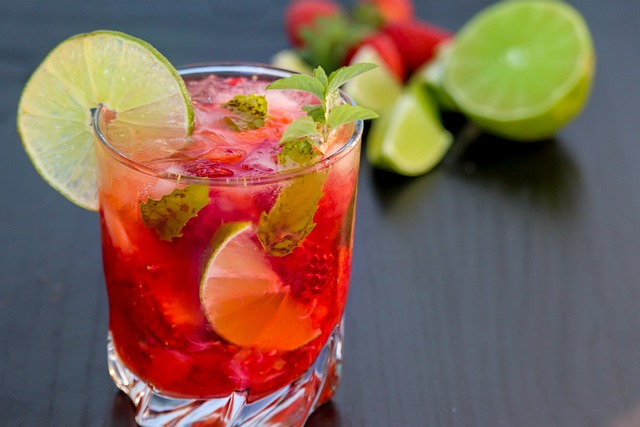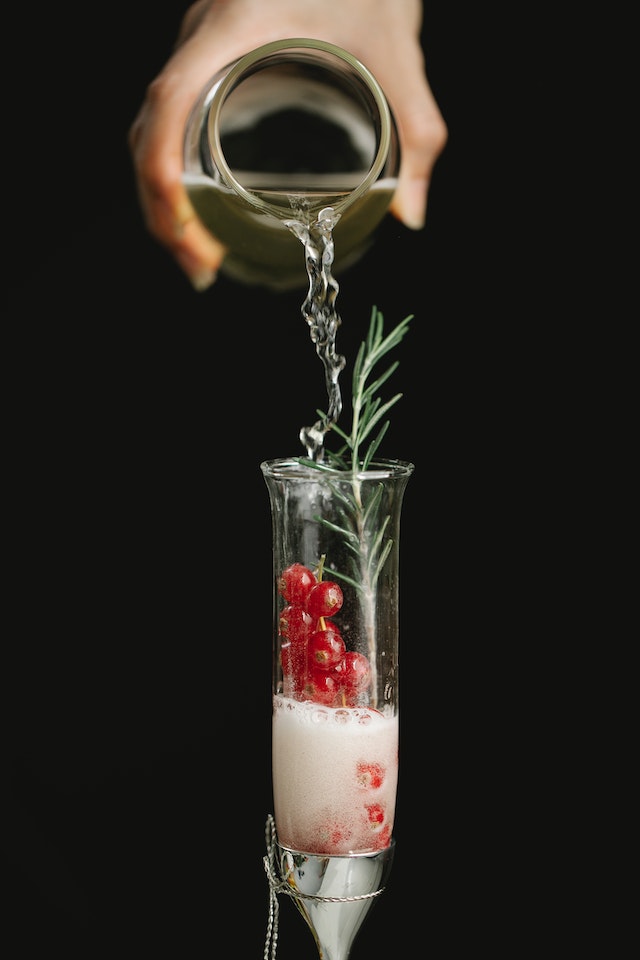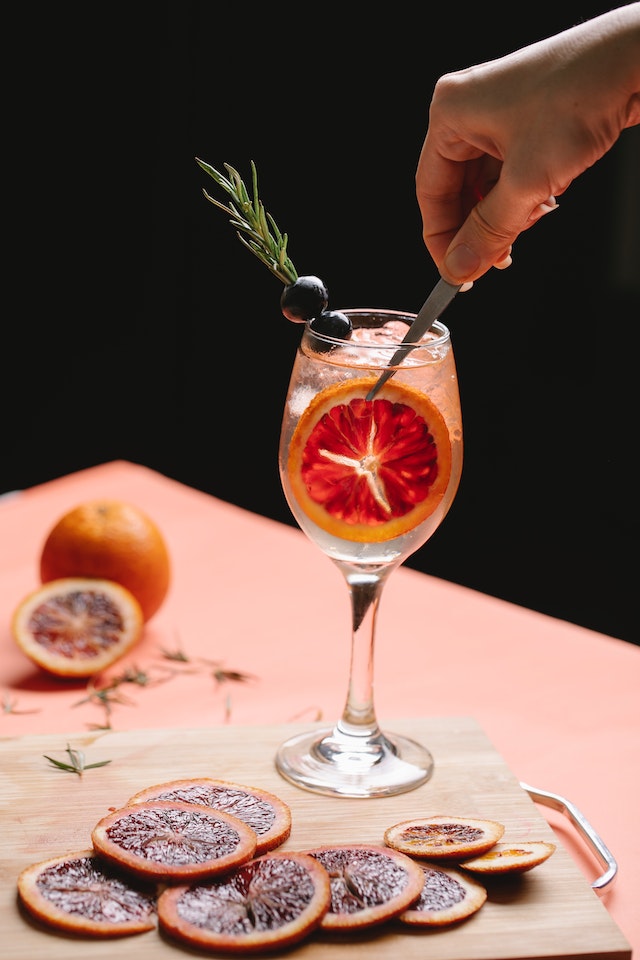
Fresh fruits and herbs have always been a crucial element in mixology, elevating cocktails to new heights with their natural flavors and fragrances. These ingredients not only add depth and complexity to a drink but also pack a punch when it comes to health benefits.
Citrus fruits like lemons and oranges are rich in vitamin C and antioxidants, while berries like strawberries and blueberries are packed with vitamins and fiber. Herbs like mint and basil have anti-inflammatory properties and are known for aiding digestion. Incorporating these ingredients into cocktails not only makes them taste great but also makes them a healthier option compared to sugary, artificially flavored drinks.
Using fresh fruits and herbs requires a bit of effort in terms of preparation, but the results are undoubtedly worth it. Muddling fresh herbs or squeezing citrus fruits by hand can make a world of difference in the taste of a cocktail. Plus, their vibrant colors and enticing aromas can enhance the visual appeal of a drink, making it more enticing.
Selecting and Preparing Fresh Fruits
Using fresh fruits in cocktails can elevate the taste and add a natural fruity flavor that artificial flavors cannot replicate. However, using subpar-quality fruits can result in a subpar cocktail. In this section, we will discuss how to select and prepare the freshest and highest-quality fruits for your cocktails.
Seasonal Fruits
Seasonal fruits are not only fresher, but they are also more affordable. Knowing which fruits are in season can help you create unique cocktails using the freshest produce available. Here are some examples of popular fruits and their respective seasons:
- Citrus Fruits (Oranges, Lemons, Limes, Grapefruits): Winter to early Spring
- Berries (Strawberries, Blueberries, Raspberries): Late Spring to Summer
- Stone Fruits (Peaches, Plums, Apricots): Summer to early Fall
- Apples and Pears: Late Summer to Fall
- Pineapples and Mangoes: Late Spring to Summer
Choosing Ripe and High-Quality Fruits
When selecting fruits, it is essential to choose ripe and high-quality fruits. Here are some tips on how to choose the best fruits for your recipes:
Color: Look for fruits that have bright, vibrant colors as this indicates freshness. For example, oranges and lemons should be bright orange and yellow, respectively.
Texture: The texture of the skin should be firm and uniform. If you notice any soft spots, bruises, or wrinkles, the fruit may be overripe or damaged.

Smell: A fruity aroma is an excellent indication of freshness. If the fruit lacks a fragrance, it may be underripe or old.
Proper Fruit Preparation
Proper preparation of fruits is crucial to bring out their best flavors. Here are some preparatory steps to take before using fruits in your cocktails:
Washing Fruits: Rinse the fruits under cold water to remove any dirt or possible pesticides. Dry them gently with a clean towel.
Cutting Fruits: Cut fruits into wedges or cubes, depending on the recipe. Be sure to remove any seeds or pits, especially when using stone fruits.
Muddling Fruits: Muddling involves crushing fruits with a muddler to release their juices and flavors. Use fresh or frozen fruits that are at room temperature to ensure maximum flavor release.
Exploring Flavorful Herbs in Cocktails
Adding herbs to cocktails is a trend that has been growing in popularity in recent years. Aside from providing unique and interesting flavor profiles, herbs also come with many health benefits. They are loaded with essential oils, vitamins, and antioxidants that can aid digestion, boost the immune system, and reduce inflammation. In this section, we will cover the most commonly used herbs in cocktail making, how to grow your own herbs, and the different preparation techniques.
Commonly Used Herbs
Basil – Basil has a sweet and slightly spicy taste, making it a versatile herb to use in cocktails. It pairs well with gin, tequila, and rum, and is commonly used in drinks like the Basil Smash, the Bee’s Knees, and the Strawberry Basil Margarita.
Mint – Perhaps the most popular herb used in cocktails, mint offers a refreshing and crisp flavor. It is commonly used in Mojitos, Mint Juleps, and other summer favorites.

Rosemary – With its strong and woody flavor, rosemary is best paired with gin, vodka, and whiskey. It is commonly used in drinks like the Rosemary Gin Fizz and the Grapefruit and Rosemary Margarita.
Thyme – Offering a subtle and earthy flavor, thyme pairs well with tequila, gin, and vodka. It is commonly used in drinks like the Thyme Collins and the Thyme Paloma.
Growing Your Own Herbs
Growing your own herbs is a great way to add fresh and flavorful ingredients to your cocktails while also saving money. To grow your own herbs, follow these steps:
Choose the Right Location – Herbs require a lot of sunlight, so choose a spot that gets at least six hours of direct sunlight each day.
Choose the Right Soil – Herbs grow best in well-draining soil, so choose a soil mix that is specifically designed for growing herbs.
Choose the Right Containers – Herbs can be grown in pots or in a garden bed. If growing in pots, make sure they have proper drainage holes and are big enough to accommodate the size of the plant.
Water Frequently – Herbs require frequent watering, so make sure to water them regularly.
Harvest Frequently – Frequent harvesting can help promote growth and prevent the plant from going to seed.
Herb Preparation Techniques
Muddling – Muddling is the process of crushing the herb with the back of a spoon or muddler. This technique releases the oils and juices of the herb, infusing it into the cocktail. It is commonly used in drinks like the Mojito and the South Side.

Steeping – Steeping involves adding herbs to hot water or alcohol and letting them sit for a period of time to extract the flavor. This technique is commonly used in making syrups, tinctures, and bitters.
Garnishing – Finally, herbs can be used as flavorful garnishes for cocktails. This is a great way to add a fresh aroma and a pop of color to a drink. Mint and rosemary are commonly used as garnishes, but the possibilities are endless.
Techniques for Extracting Flavors from Fresh Ingredients
Fresh ingredients like fruits and herbs are packed with natural flavors and fragrances that can make cocktails taste amazing. Knowing how to properly extract these flavors and incorporate them into your drinks can take your mixology skills to the next level. Here are some techniques for extracting flavors from fresh ingredients:
Muddling and Expressing
Muddling involves crushing fruits or herbs with a muddler to release their juices and oils, which are then mixed into the drink. Here are some tips on how to properly muddle ingredients:
Proper muddling techniques for releasing fruit juices and herb oils
- Use a sturdy muddler. A wooden or metal muddler is preferred over plastic or silicone ones, as they are more durable and can handle more pressure.
- Don’t over-muddle. Over-muddling can lead to bitter flavors and a gritty texture. Stop muddling once the juices and oils have been released.
- Muddle only what is needed. Overly muddling can dull the flavors of the cocktail, so only muddle enough herbs or fruits for the recipe being used.
Expressing citrus oils for garnishing and flavor enhancement
- Cut the citrus peel with a peeler or knife.
- Hold the peel over the cocktail, skin side down.
- Squeeze the peel to release the oils.
Infusions and Syrups
Infusing spirits and making syrups are two techniques used to extract flavors from fresh ingredients and incorporate them into cocktails.
Creating fruit-infused spirits for unique cocktail bases
- Choose the fruit to infuse. Fruits like raspberries, strawberries, and blueberries are great for infusing vodka, while peaches and apricots pair well with bourbon.
- Choose the spirit. The type of spirit used will have an impact on the final flavor of the infusion.
- Combine the fruit and spirit in a jar and let it sit for at least 24 hours to allow the flavors to meld.
- Strain out the fruit and use the infused spirit as a cocktail base.

Making herb-infused syrups for added depth of flavor
- Combine equal parts sugar and water in a saucepan and bring to a boil.
- Add herbs of choice and let them steep for at least 30 minutes, or until the desired flavor is achieved.
- Strain out the herbs and store the syrup in a bottle or jar in the refrigerator.
Using fresh ingredients and properly extracting their flavors can elevate your cocktails and impress your guests. Experiment with these techniques and find the ones that work best for you and your drinks.
Fresh fruits and herbs are essential ingredients in mixology. They add natural and unique flavors, enticing aromas, and health benefits to cocktails. Properly selecting and preparing fruits and herbs, growing your own herbs, and using extraction techniques can elevate your mixology skills and create amazing drinks that are both delicious and healthy. So, next time you are making a cocktail, consider using fresh fruits and herbs to enhance the taste and make it a healthier option. Cheers to fresh ingredients and elevated drinks!
Herbal History
Herbs have been central to drinking culture for centuries, long before cocktails existed in their modern form. Monks in medieval Europe distilled herbal tonics for health, while ancient civilizations used mint, basil, and thyme in both medicine and feasting rituals. That same lineage continues today whenever a sprig of mint tops a Mojito or basil perfumes a summer gin smash.
Geography shaped the flavor palette as much as history. Mediterranean climates offered rosemary and thyme, while tropical regions contributed lemongrass and hibiscus. These plants traveled through trade routes and migrations, weaving into local drinking traditions and eventually into global bar culture. A single garnish today often carries centuries of cultural exchange.
Herbs also reveal the blurred line between refreshment and remedy. Early apothecaries prescribed infusions of chamomile, sage, or peppermint not just for taste but for digestion and vitality. That legacy remains in modern bartending, where herb-driven tonics or even alcohol-free spritzers rely on the same roots as classic non-alcoholic mixers. The connection is historical, not accidental.
Pairing herbs with fruits creates a layered complexity. Citrus brightens mint, berries deepen thyme, and pineapple finds unexpected harmony with cilantro. These combinations have moved beyond garnishes into syrups, shrubs, and tinctures, giving bartenders more ways to weave old traditions into new expressions.
Today, the rise of craft mixology has expanded the palette further. Ingredients once considered exotic—like shiso, kaffir lime leaves, or saffron—are now part of a bartender’s toolkit. They join a broader collection of specialty ingredients that push cocktails past the ordinary, while still drawing on the same ancient idea: fresh plants have always been the heart of the drink.
